Samsung Galaxy S24 Ultra vs. Google Pixel 8 Pro
The Samsung Galaxy S24 Ultra goes head-to-head with the Google Pixel 8 Pro.
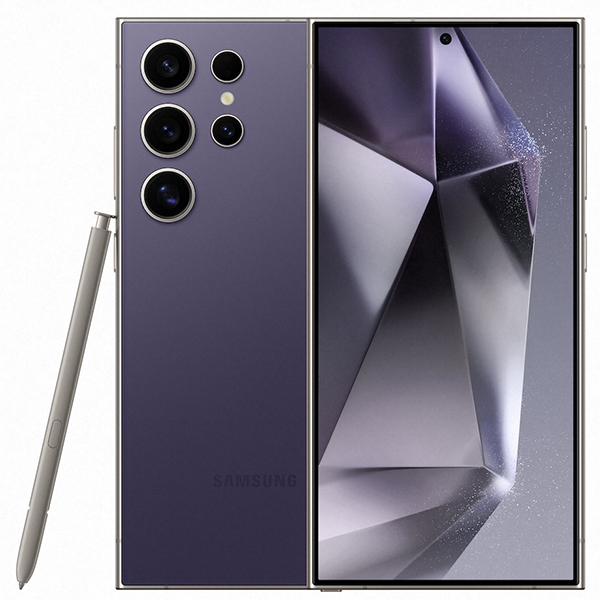
A phone filled with AI
When it comes to AI integration, the Samsung Galaxy S24 Ultra takes the cake. The phone has tons of AI goodies that influence the way you can communicate, take photos and videos, and even interact with the phone. It’s a highly intelligent, feature-rich device with a gorgeous frame and futuristic functions. But you’ll pay a pretty penny for it.
For
- Tons of AI features
- High-res, bright screen
- Advanced security features
- Durable titanium finish and better glass material
- Comes with an S Pen
Against
- Very expensive
- Camera resolution isn't a huge step up from the S23 Ultra
- No expandable storage
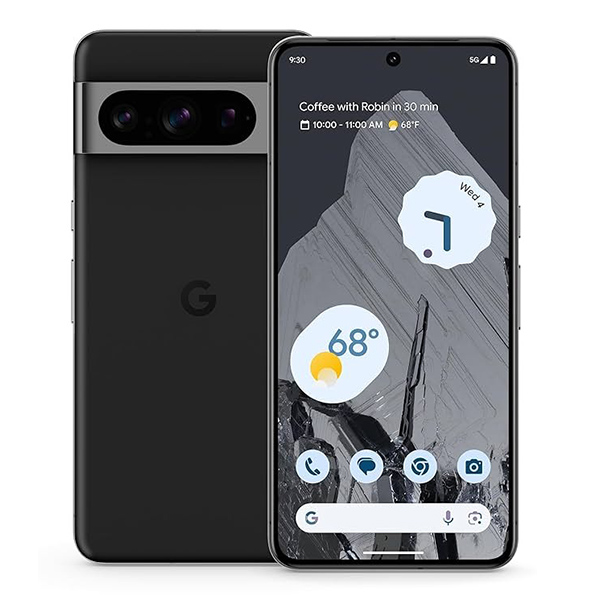
The top Pixel
If you’re looking for a Google Pixel phone to rival the best of what Samsung Galaxy has to offer, the Google Pixel 8 Pro is it. The phone is powerful, fast, intuitive, takes great photos, and features Google AI technology throughout. It’s the most premium phone in the Pixel line-up and a suitable rival to the brand-new Samsung Galaxy S24 Ultra that doesn’t cost as much.
For
- Gorgeous, large screen
- Cool temperature sensor feature
- Powerful cameras and useful editing features
- Powerful processor and RAM
Against
- Still expensive
- No expandable storage
- Not as much AI integration
If you’re trying to decide if you should opt for the well-reviewed Google Pixel 8 Pro or invest in the new Samsung Galaxy S24 Ultra, it’s easy to see how this would be a difficult decision. Both are fantastic phones that make use of AI technology.
While we haven’t yet tested the S24 Ultra for a full review, our early take on the device along with its impressive specs means it’s an enticing option. When deciding between the Samsung Galaxy S24 Ultra vs. Google Pixel 8 Pro, there’s a lot you need to take into consideration. Here, we’ll break it down for you.
Samsung Galaxy S24 Ultra vs. Google Pixel 8 Pro: How they look
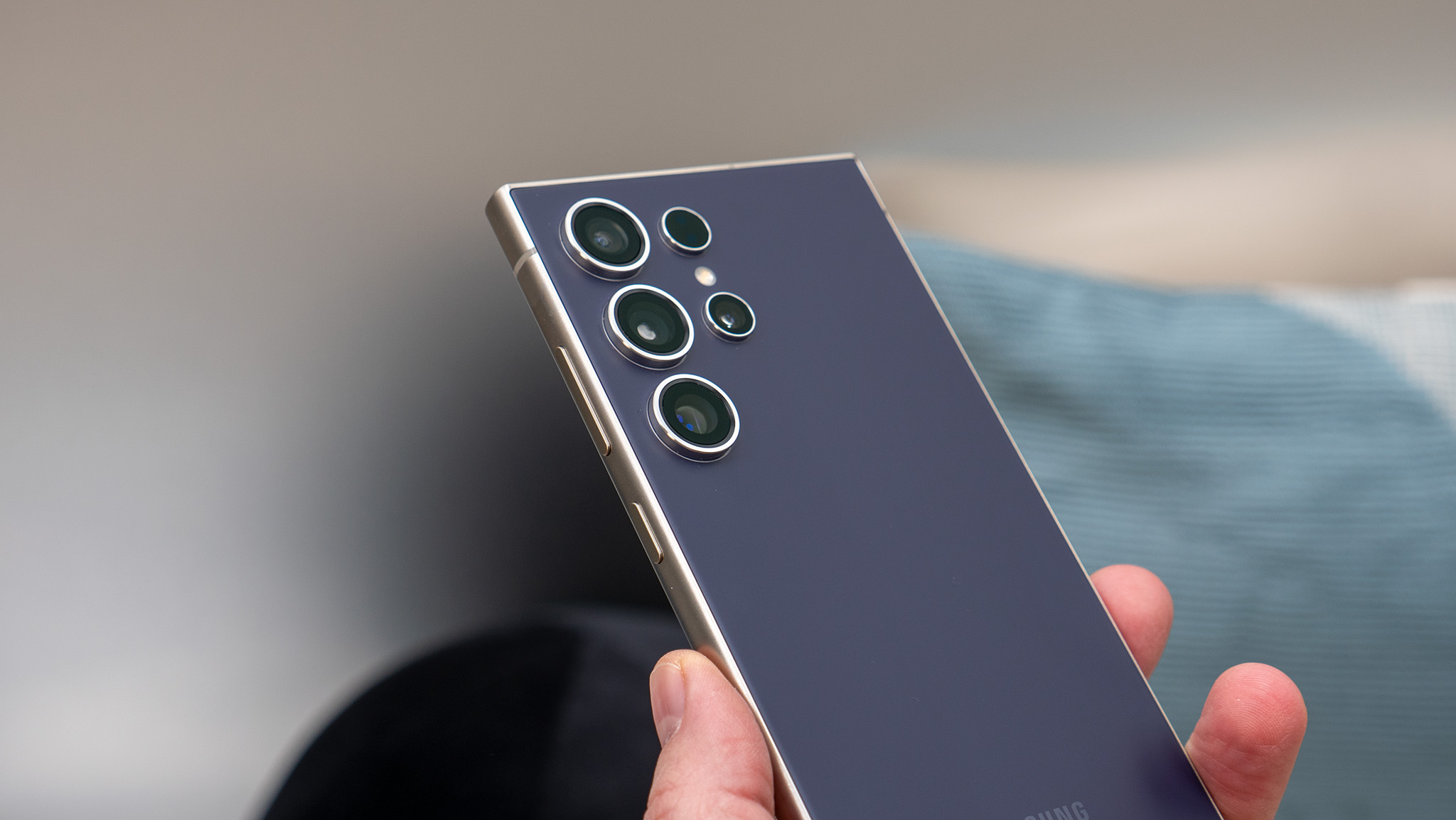
The Samsung Galaxy S24 Ultra is the first in the line to include a titanium frame, offering a sleeker and more durable finish that incorporates recycled materials. This is complemented by Corning Gorilla Armor on the display, which Samsung says improves durability by 50 percent and is four times more scratch-resistant than the glass material found on the Galaxy S23 Ultra. The screen also offers reduced glare in various lighting conditions.
It comes in Titanium Gray, Titanium Black, Titanium Violet, and Titanium Yellow. There are also Samsung-exclusive colors you can get when purchasing the phone from a Samsung Store or the Samsung website: Titanium Green, Titanium Blue, and Titanium Orange. The phone is similar in size to the Google Pixel 8 Pro. It’s a smidge wider but also a tad slimmer, though it’s not enough that you’ll even notice the difference.
The phone sports a sizeable 6.8-inch Dynamic AMOLED 2X QHD+ display with an impressive 3,088 x 1,440 resolution. The Android phone is flatter than the previous generation phone, which makes it more comfortable to view and use. It also has Samsung’s Vision Booster technology, which helps improve visibility of the screen outdoors, and sports 2,600 nits peak brightness. You’ll enjoy super smooth operation while multitasking, gaming, watching videos, or performing other intensive tasks thanks to the adaptive 120Hz refresh rate.
You’ll get the phone with 256GB, 512GB, or 1TB of storage space, but this is not expandable via memory card. So, you’ll want to opt for the largest amount of storage you think you’ll need, unless you plan to stick with cloud storage. It runs on Android 14 with the Samsung One UI 6.1 overlay, so it’s not a stock Android experience. But you do get the best that Samsung’s One UI has to offer, including being able to personalize the look and feel of the phone, from the lock screen to apps and notifications. As an added bonus, it comes with Samsung’s S Pen.
You’ll get a good day’s worth of battery life from the 5,000 mAh battery, the same as the Pixel 8 Pro. The Galaxy S24 Ultra also supports fast wireless charging 2.0 via the WPC standard along with Wireless PowerShare so you can use it to recharge other compatible devices by simply placing them atop its surface. This includes many other Samsung Galaxy phones, wearables, and true wireless earbuds. For wired charging, you’ll get up to about a 65 percent charge after just 30 minutes when using a 45W adapter (sold separately) and a 5A USB-C cable.
Along with an IP68 water-resistant rating, the phone includes 5G and LTE, Wi-Fi Direct, and Bluetooth 5.3. There’s no headphone jack and it has dual stereo speakers.
As Samsung has done with many of its latest phones, you’ll be able to confidently use this phone for years to come (or hand it down or resell it when you upgrade) since it supports seven years of software and security updates.
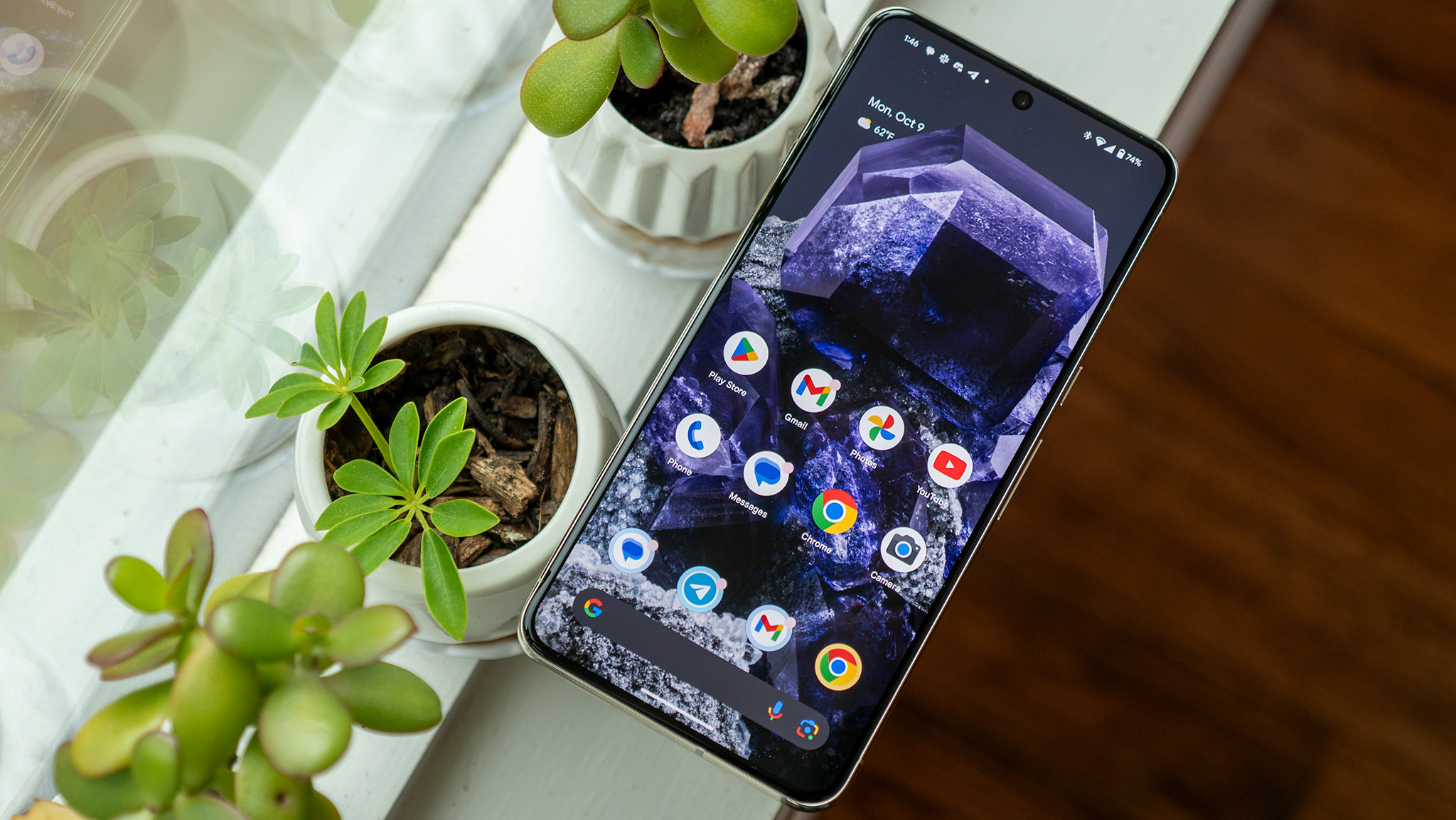
Available in Porcelain, Bay, and Obsidian – Google’s signature colors – the Google Pixel 8 Pro has a slightly smaller 6.7-inch screen, despite being almost identical in size. Thus, while it’s an edgeless screen, the design isn’t quite as bezel-less as the Samsung Galaxy S24 Ultra: you’ll get an inch more screen real estate to work with when using the new Samsung phone.
In his review, Android Central’s Nicholas Sutrich loves the rounded corners and flat display, saying it makes the phone comfortable to hold. The display is a Super Actua LTPO OLED with 1,344 x 2,992 resolution and 1,600 nits of brightness (peak 2,400 nits). Bottom line: even though the specs don’t measure up to the Galaxy S24 Ultra in this respect, it’s still bright and beautiful, a sight to behold in any situation.
The screen is made of Corning Gorilla Glass Victus, which is both scratch- and fingerprint-resistant. It, too, offers an adaptive refresh rate that goes from 1-120Hz, depending on the application you’re using and what’s needed. So multitasking, web surfing, playing games, watching movies, and more, all work seamlessly without lag or stutter.
You can get this phone in the same three storage options with the addition of a 128GB version, which will save you a bit of money if you’re on a budget. However, since there’s no expandable memory via card slot, as with the Samsung Galaxy S24 Ultra, you’re best to save up to get one with more storage. You do get a six-month Google One Premium trial with 2TB storage with purchase. But once this runs out, you’ll have to be prepared to pay if you don’t get a phone with enough storage.
With this phone, you get a clean, stock Android experience with Android 14. It has a slightly larger 5,050mAh battery that will last a full day as well. But you can extend it to up to 72 hours using Extreme Battery Saver mode. It supports fast wireless charging as well as battery share which, like the Samsung phone, allows you to leverage the phone’s power to recharge other compatible Google devices, like Pixel Buds. Sutrich found the battery life to be “superb.”
The phone is IP68 water-resistant and comes with stereo speakers and support for Spatial Audio, three mics with noise suppression, and fingerprint and face unlock. There’s no headphone jack, but this is becoming more common with the latest phones as we rely more and more on wireless headphones and earbuds for personal listening.
Google has also upped the ante of late with long-time support and offers up to seven years of OS and security updates for this phone. Whether you use it for that long or want to hand it down to someone or even resell it, this means the phone will retain its value for years to come.
One added nicety with the Google Pixel 8 Pro: given Google’s ownership of Fitbit, you also get a six-month trial to Fitbit Premium (both for new and returning customers), which can be used with a Fitbit smartwatch or fitness tracker or a Google Pixel Watch or Google Pixel Watch 2. A purchase also includes three months of YouTube Premium.
Samsung Galaxy S24 Ultra vs. Google Pixel 8 Pro: Breaking it down
Before we delve into things like processing speeds and the ever-popular cameras, let’s see how these two phones look side-by-side when comparing specs.
| Header Cell - Column 0 | Samsung Galaxy S24 Ultra | Google Pixel 8 Pro |
|---|---|---|
| OS | Android 14 (One UI 6.1) | Android 14 |
| Colors | Titanium Gray, Titanium Black, Titanium Violet, Titanium Yellow (Samsung-exclusive Titanium Green, Titanium Blue, Titanium Orange | Obsidian, Porcelain, Bay |
| Screen Size | 6.8 inches | 6.7 inches |
| Screen Resolution | 3,088 x 1,440 | 2,992 x 1,344 |
| Screen Type | Dynamic AMOLED 2x QHD+ | LTPO OLED |
| Refresh Rate | 120Hz | 120Hz |
| Processor | Snapdragon 8 Gen 3 | Google Tensor G3 |
| RAM | 12GB | 12GB |
| Storage | 256GB, 512GB, 1TB (not expandable) | 128GB, 256GB, 512GB, 1TB (not expandable) |
| Cameras | 200MP wide, 12MP ultra-wide, 50MP telephoto, 10MP telephoto, 12MP front | 50MP main, 48MP ultra-wide, 48MP telephoto, 10.5MP ultra-wide front |
| Speakers | Stereo Speakers | Stereo Speakers, Spatial Audio |
| Battery | 5,000 mAh | 5,050 mAh |
| Wireless Charging | Yes | Yes |
| Bluetooth | 5.3 | 5.3 |
| Water Resistance | IP68 | IP68 |
| Cellular | 5G | 5G |
| Size | 6.4 x 3.11 x 0.34 inches | 6.4 x 3.01 x 0.35 inches |
| Weight | 233 grams | 213 grams |
There are a lot of similarities between these two premium phones, but a few things stand out that might help you make a decision between them.
Samsung Galaxy S24 Ultra vs. Google Pixel 8 Pro: Processing and power
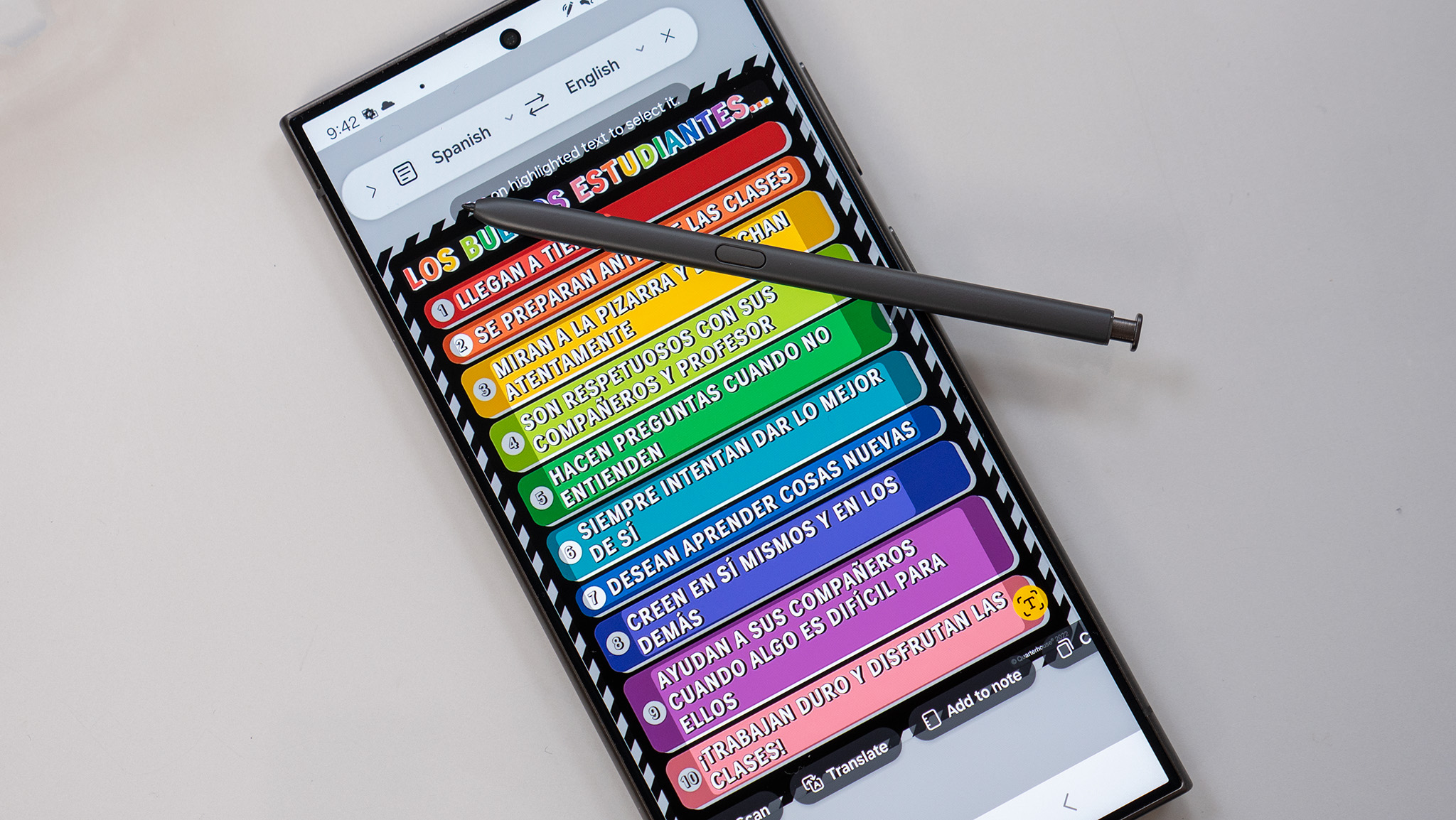
What fans really want to know is: how do these two phones operate? In both cases, you’ll get a wonderful experience beyond the bright and beautiful screens, robust OS, and high refresh rate.
With the Samsung Galaxy S24 Ultra, it’s powered by the Snapdragon 8 Gen 3 platform, which makes it fast, efficient, and able to handle virtually anything you throw at it for heavy, daily use. Combine this with the 12GB RAM, and it’s a phone that can keep up with all your demands, for both work (or school) and play.
This phone really focuses on the integration of AI, which is found across every facet of how you use it, from the way you communicate to photography features, the latter of which we’ll discuss in the next section. This phone has Live Translate which delivers two-way real-time voice and text translations of calls within a native app. There’s also an Interpreter feature that can display live conversations on a split screen, even without Wi-Fi or a cellular connection.
AI Chat Assist, meanwhile, makes it easier to compose text messages while AI built into the keyboard can translate messages, e-mails, and more in real time. This even works while driving through a feature in Android Auto that will summarize incoming messages and even suggest how to reply: this might be something as simple as sending someone your ETA.
A feature called Note Assist in Samsung Notes offers AI-generated summaries, templates, and cover creations, while Transcript Assist uses AI and speech-to-text voice recordings to transcribe, summarize, and translate recordings.
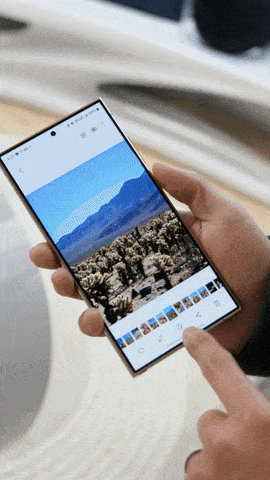
Circle to Search with Google is a new gesture-driven way to search the web. You can circle, highlight, scribble on, or tap virtually anything onscreen to learn more about it through helpful search results. With some content, you may even see AI-powered overviews that allow you to continue to interact by asking complex or more nuanced questions. Note that Circle to Search will also be launching on the Google Pixel 8 Pro.
Gamers will appreciate the larger vapor chamber, which improves the thermal control system so the phone doesn’t run hot, even when you’re playing an intense game, while performance remains unaffected.
Finally, there’s the aspect of security. This phone comes secured by Samsung Knox along with Advanced Intelligence settings that let you disable the AI features if desired (though this seems counter-intuitive to everything that makes the device function so differently from others). It also features the Knox Matrix with Passkeys, enhanced data protection, and other security features like secure Wi-Fi, private share, and maintenance mode.
Bottom line: this phone is heavy on AI, so if you’re looking for a phone that makes the most out of AI features, the Samsung Galaxy S24 Ultra will be the best option for you.
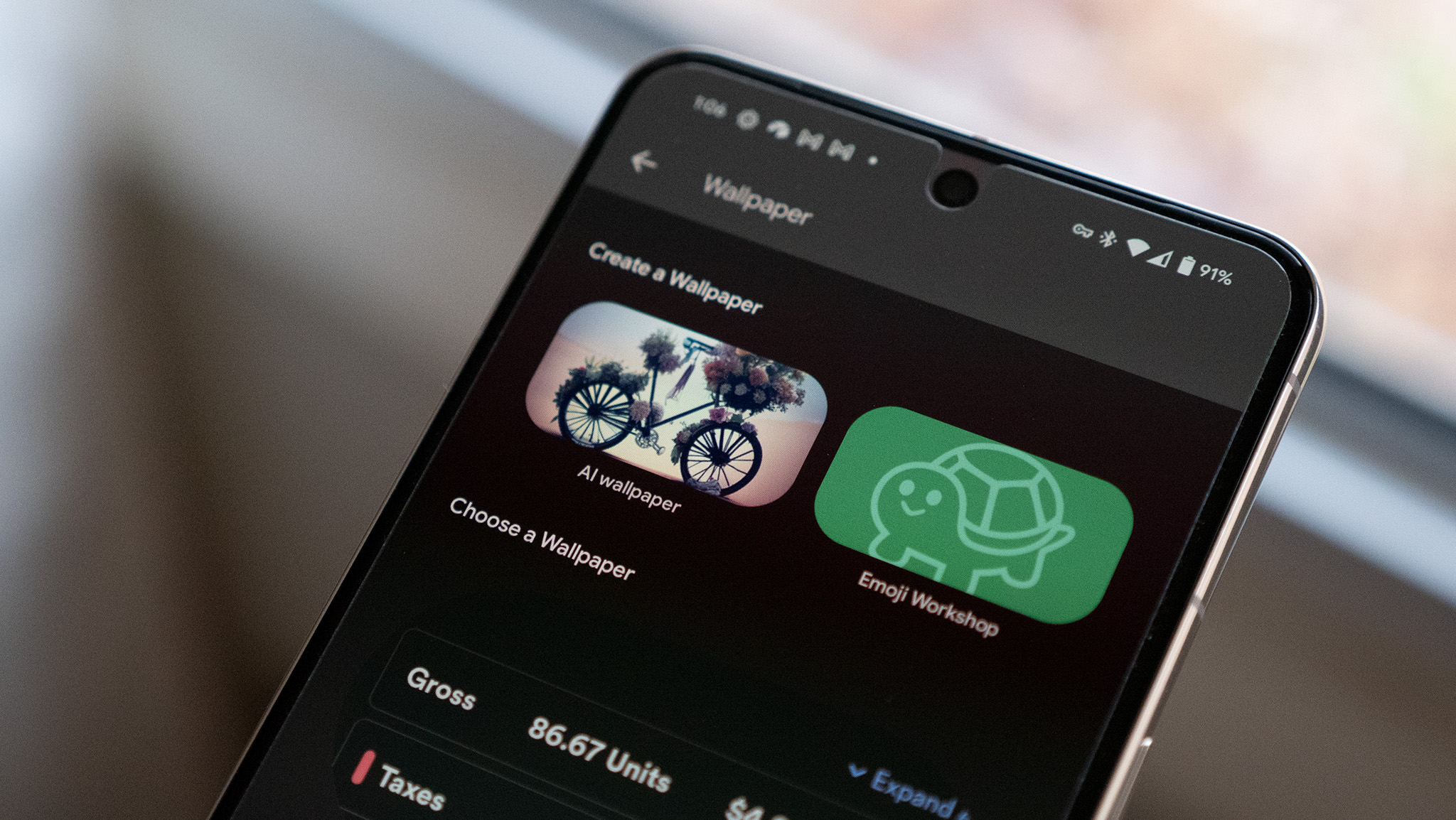
Powered by the Google Tensor G3 chip, the Google Pixel 8 Pro also features Google AI, which works to permit a variety of new features. These relate to photos and videos, which I’ll discuss in the next section, as well as other smart upgrades. This includes features like Live Translate and an improved Google Assistant that can do things like summarize web pages, read text aloud, help you compose messages via voice, and even translate. Speaking of which, there’s also the Live Translate feature, which can connect in more languages.
With 12GB RAM as well, the phone can handle your day-to-day needs, though Sutrich found that performance for gaming leaves something to be desired. You’ll also find useful features like Call Screen, which automatically screens calls that are detected as spam and filters them out. It can answer the call for you using a natural-sounding voice so you don’t have to deal with incessant ringing or annoying fake callers. The phone works with apps like Google Wallet as well.
The Google Pixel 8 Pro boasts additional improvements leveraging Google features and apps, like more immersive views in Maps, additional prompts in Gmail, and more. The Titan M2 chip included in the phone combines with a built-in VPN by Google One to provide an even more secure experience. Other safety features include crisis alerts and car crash detection.
This phone also has a neat temperature sensor that can take the temperature of a nearby object, like a pot of hot water, or a beverage like a baby bottle. With FDA approval, this could eventually extend to even taking your own temperature to determine if you’re running a fever. Right now, however, it’s a nice-to-have feature that’s more of a novelty than anything else. Sutrich found that it isn’t always accurate, so there’s still some work to be done.
Samsung Galaxy S24 Ultra vs. Google Pixel 8 Pro: The cameras
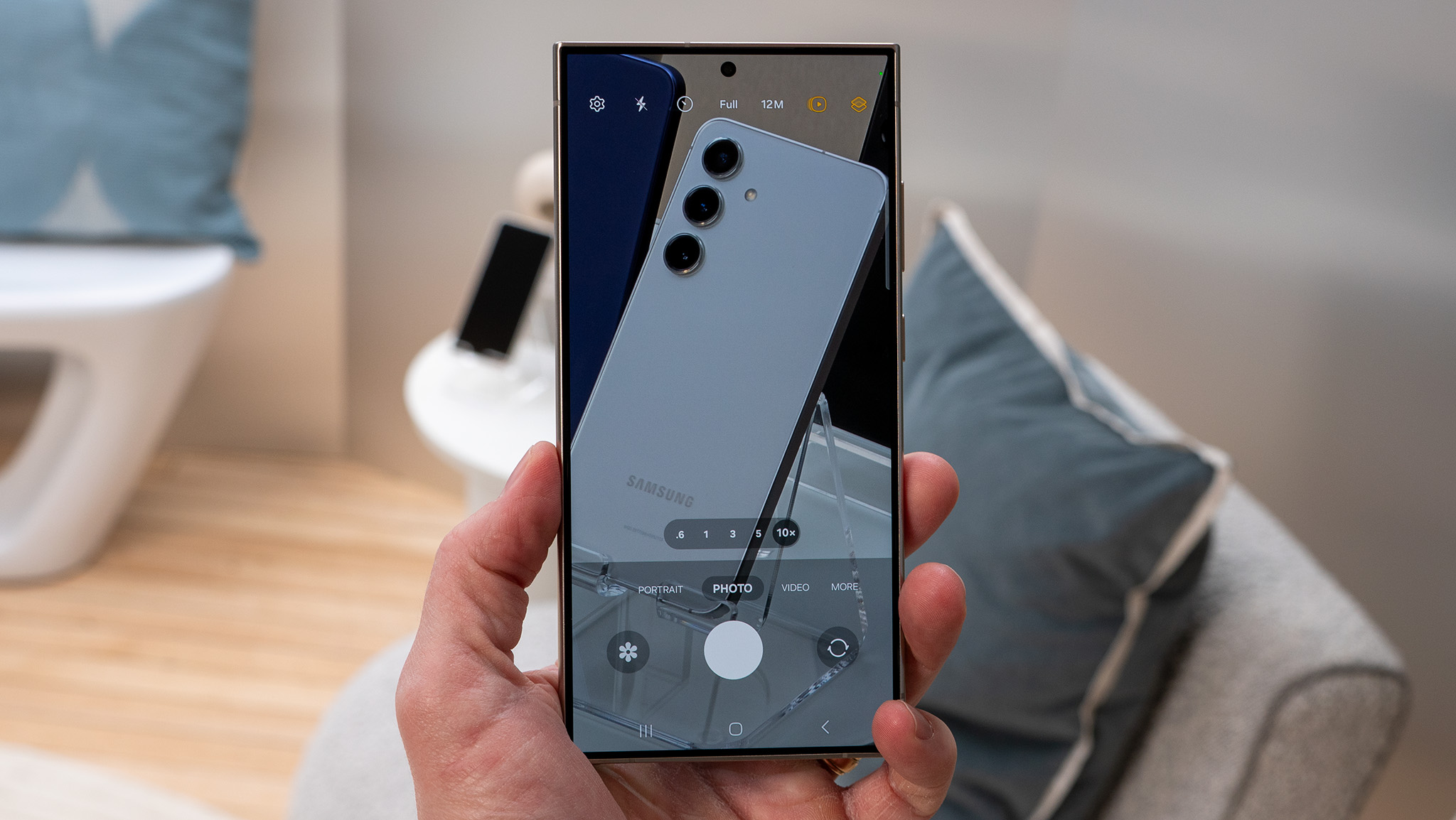
There’s no doubt that the Samsung Galaxy S24 Ultra offers the most advanced AI camera system around. How it officially works, however, remains to be seen until we finish our full review.
One of the most anticipated features of any new premium phone is the camera. What cameras are included and, more importantly, what types of photos can you take with them and how do they look? Here’s a rundown to give you an idea of how they compare.
When it comes to the Samsung Galaxy S24 Ultra, once again, AI takes center stage with regards to the cameras. It has a 200MP wide camera, a 50MP telephoto camera, a 10MP telephoto camera, a 12MP ultra-wide camera, and a 12MP front camera. A ProVisual Engine leverages AI to help improve your photos. The Quad Tele System sports a new 5x optical zoom lens that works with the 50MP sensor to help you improve zoom up to 10x magnification. There’s also 100x enhanced digital zoom.
Nightography photos and videos have been upgraded using the Space Zoom feature, while the larger pixel size helps capture more light in dim conditions. Blur is also reduced thanks to the wider optical image stabilizer (OIS).
For videos, there’s a Dedicated ISP Block, which helps reduce noise. The phone can also analyze gyro information to help distinguish between your movement while you record and that of the subject to help remove noise and yield clearer videos, even when you’re far away.
Super HDR provides previews of an image before you press the shutter. Once photos have been taken, you can make use of Galaxy AI editing tools to do things like erase, re-compose, and remaster photos. Edit Suggestion will even suggest ways you can tweak the photo while Generative Edit will fill in parts of a background using generative AI. AI can fill borders in crooked photos, even move a person’s position, and blend the background so the photo looks seamless.
To help distinguish between original photos and those manipulated by AI, any photo that uses AI that is taken with the Galaxy S24 Ultra will include a watermark along with information in the photo’s metadata. Samsung says many third-party social apps, like Instagram, are ready to take full advantage of the new AI-powered camera system of the Galaxy S24 Ultra. For videos, there’s Instant Slo-mo that generates additional frames based on movements. This lets you slow down certain moments to provide a more detailed look at the footage.
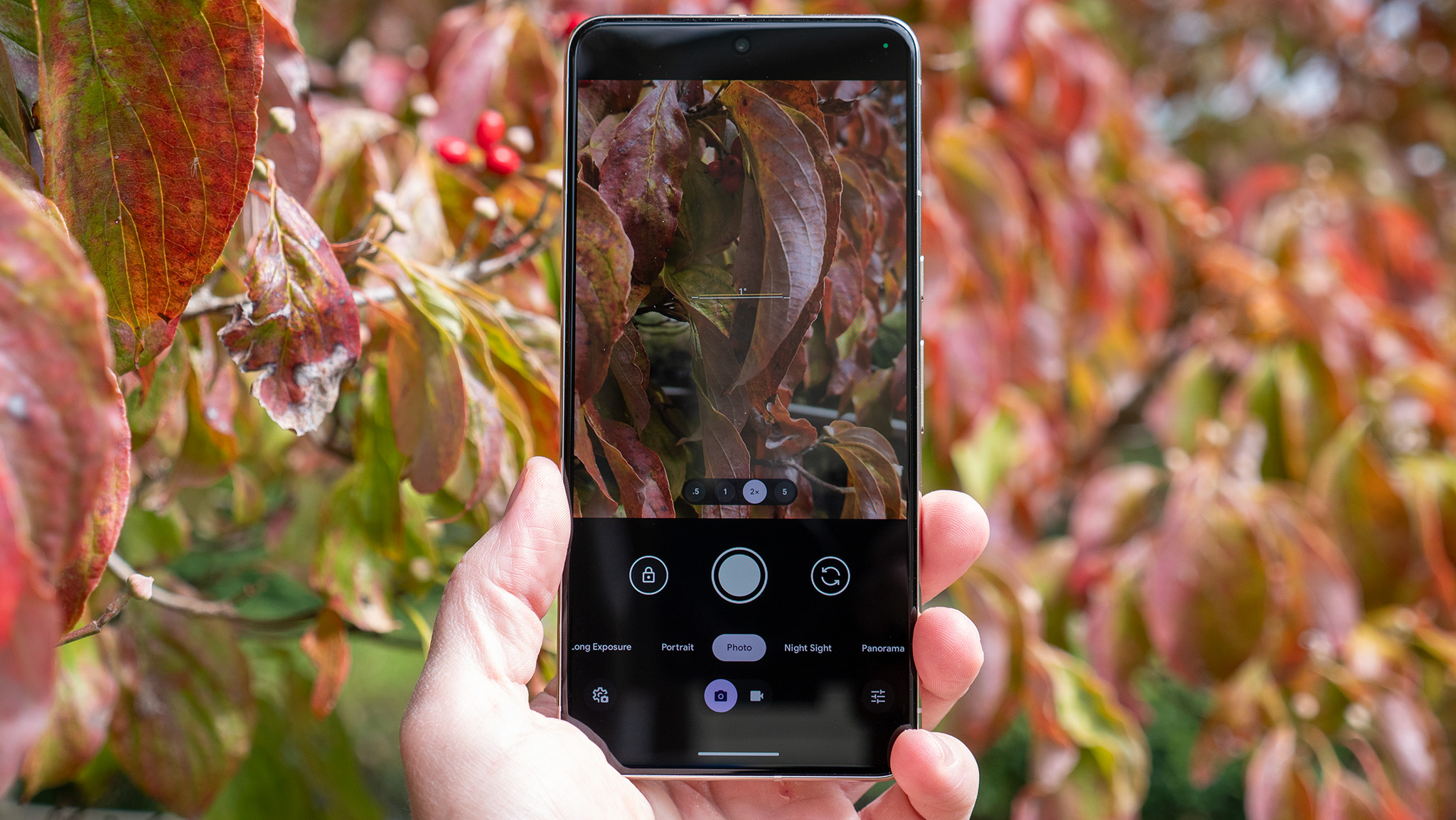
When it comes to the Google Pixel 8 Pro, you get a 50MP main camera, a 48MP telephoto camera, a 48MP ultra-wide camera with improved Macro Focus (compared to the previous generation 7 Pro), and a 10.5MP front camera. With this phone, however, it’s all about the features you can use both while taking photos and in post-editing.
First, there’s Super Res Zoom, which allows you to snap a photo while zooming up to 30x without losing any detail, focus, or clarity. That’s great for taking things like event photos at a concert (if you didn’t get VIP tickets!), pictures from your child’s soccer game, and other distance photography.
To further tweak things, the Google Pixel 8 Pro has various advanced camera settings so you can adjust shutter speed and ISO. With Night Sight, you can enjoy improved low-light photos while Google AI works to reduce noise and boost quality in not only photos, but videos as well.
It’s in the editing features, however, where this phone really shines. Magic Editor allows you to make custom edits to photos, and eventually even do things like improve lighting and background, moving a subject (while intelligently filling in the background), and more.
By far the coolest photo editing feature, however, is Best Take. If you have ever taken a photo with multiple people, even a group, you know how challenging it can be to get a perfect one. Someone’s eyes will be closed in one photo, someone else’s in another. A child’s head will be turned or someone will have a goofy expression. With Best Take, you can effectively stitch all these photos together to get the best possible one. Choose the desired expression of each person and create the, as the name implies, best-take photo.
There are creative and useful editing features for videos as well, like Audio Magic Eraser. This feature uses Google AI to reduce ambient noise, like heavy winds or cars, from the background of your video. Video Boost, meanwhile, uses the Tensor G3 chip to adjust color, lighting, stabilization, and graininess in videos; and enable Night Sight Video for better low-light video performance.
Other photo editing features you’ll find in the Google Pixel 8 Pro include Photo Unblur for reducing blurriness, Magic Eraser for eliminating distracting elements, Face Unblur for unblurring faces, Portrait Mode, and more. Sutrich says the photo editing feature works unbelievably well, though the AI tools only work with certain types of photos.
Samsung Galaxy S24 Ultra vs. Google Pixel 8 Pro: Which should you buy?
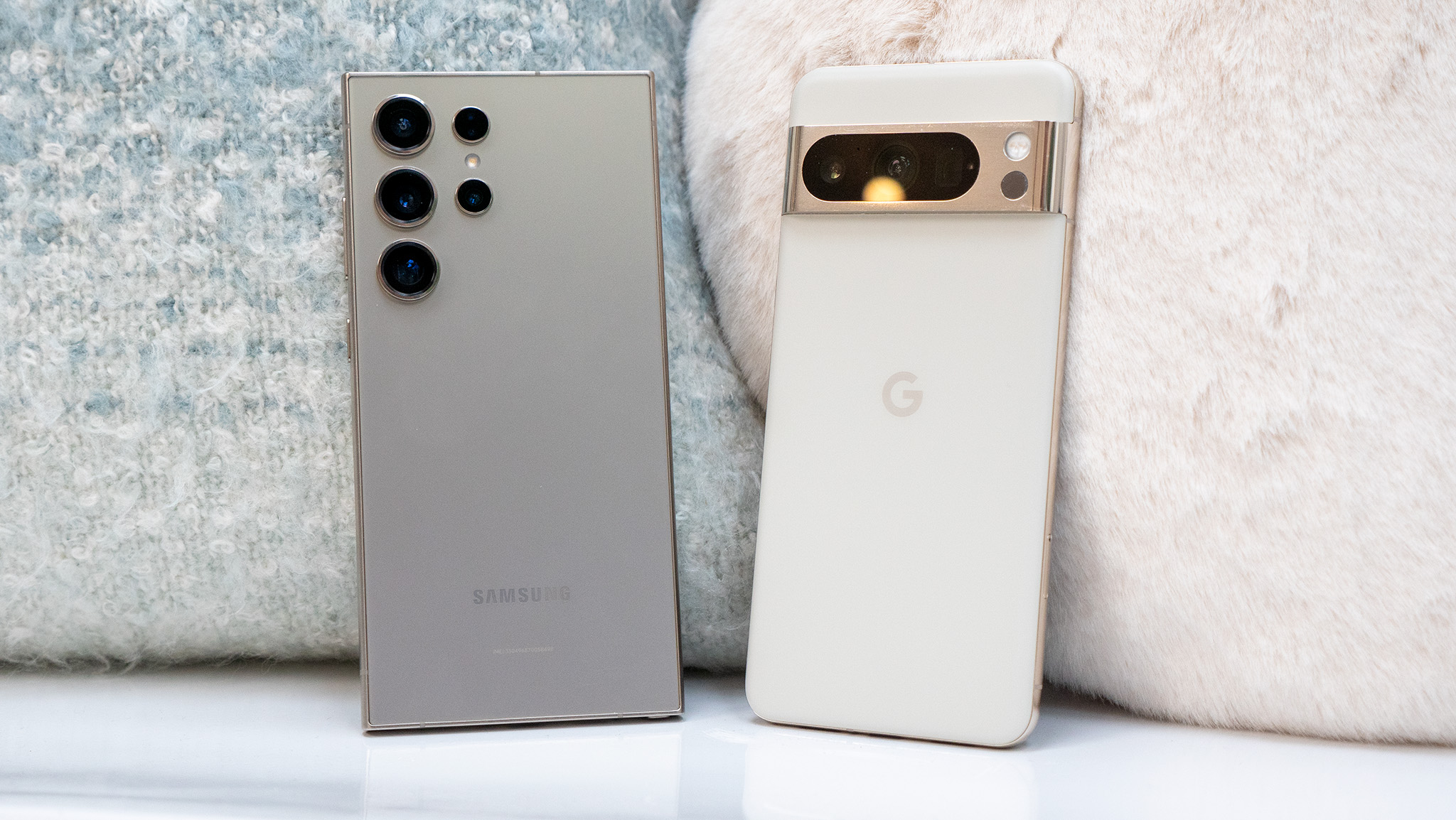
Now comes the decision: between the Samsung Galaxy S24 Ultra vs. Google Pixel 8 Pro, which should you buy? The Samsung Galaxy S24 Ultra is much more expensive, but it also boasts more powerful AI features. With that said, the Google Pixel 8 Pro has powerful AI integrations as well. And with long-time software support, chances are you’ll see more features and functions added over time.
If you’re really into generative AI and love being able to leverage intelligent features, suggestions, and options like translation, the Samsung Galaxy S24 Ultra will truly impress. For productivity, the inclusion of an S Pen could be one that sways your decision. If you just want a fantastic phone that has some AI features and works beautifully, however, the Google Pixel 8 Pro won’t disappoint. Overall, Sutrich says the Google Pixel 8 Pro is a “pure joy to use and is an almost entirely positive experience.”
It comes down to price and ecosystem. If you own other Samsung devices, like a Samsung TV, smartwatch, wireless earbuds, and more, or plan to buy others, sticking with the Galaxy phone will make sense. You could save by opting for an older model or go all out with this one (or one of its cheaper sister devices, including the Galaxy S24 or 24+). If you aren’t tied to any ecosystem, or maybe even have a Pixel Watch 2 or plan to get one (especially with the inclusion of a Fitbit Premium trial with the Google Pixel 8 Pro), you might be steering more toward the Pixel 8 Pro.
Whichever way you go, you’ll get a premium Android experience with a device that can keep up with you and all your demanding needs and tasks.

An AI lover’s dream
If you love everything about AI and what it has to offer in terms of improving experiences with communications, photography, and more, you’ll want to run and grab the Samsung Galaxy S24 Ultra. It’s the most AI-rich phone around and boasts tons of impressive specs beyond that, along with a sleek and ultra-durable titanium finish and Corning Gorilla Armor screen. It’s a prestige piece as much as it is a premium phone.

Reliably great
Save a few bucks and still get an ultra-premium experience with the Google Pixel 8 Pro, which offers some AI features, particularly ones that help you take better photos and videos and intelligently edit them when you’re done. The cameras are fabulous, the screen is bright, OS responsive, and operation intuitive. You can’t ask for much more from a phone. In terms of performance and price equalling value, the Google Pixel 8 Pro is among the best you can get.
Be an expert in 5 minutes
Get the latest news from Android Central, your trusted companion in the world of Android

Christine Persaud has been writing about tech since long before the smartphone was even a "thing." When she isn't writing, she's working on her latest fitness program, binging a new TV series, tinkering with tech gadgets she's reviewing, or spending time with family and friends. A self-professed TV nerd, lover of red wine, and passionate home cook, she's immersed in tech in every facet of her life. Follow her at @christineTechCA.
